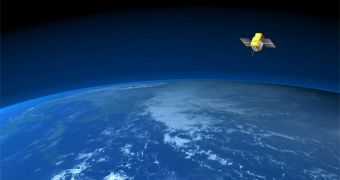It's common knowledge that our Sun goes through 11-year-long cycles at all times. Periods of very intense solar activities alternate with times when the yellow dwarf is barely active. During the former, a large number of sunspots and solar storms appear on its surface, and they can affect communications and satellite networks back on Earth, as well as threaten the lives of astronauts in space. During the latter, everything is calmer, but it would appear that solar minimums have an adverse effect of their own, in that they trigger a cooling process in the upper layers of the Earth's atmosphere, LiveScience reports.
The new observations, experts say, can now be used to try to explain one of the most peculiar phenomena generated by our planet, the periodic swelling and shrinking of the atmosphere. Learning how and why this happens is very important, because the event causes shifts to occur in the orbital paths of satellites, space debris, the International Space Station, space-based telescopes and other instruments in the Earth's orbit. The new data were collected by NASA's Thermosphere Ionosphere Mesosphere Energetics and Dynamics TIMED mission.
According to Boulder, Colorado-based National Center for Atmospheric Research (NCAR) expert Stan Solomon, the thermosphere is responding in dramatic manner to the 11-year solar cycle. This layer of the atmosphere begins about 80 kilometers above the surface of the planet, and is the largest of all atmospheric layers. It is located underneath the exosphere, the outermost layer, and above the mesosphere. Within it, ultraviolet radiation coming in from the Sun causes the ionization process to occur. Solomon made the announcement recently at the annual meeting of the American Geophysical Union, which is being held in San Francisco.
“The Sun is in a very unusual period. The Earth's thermosphere is responding remarkably – up to an order of magnitude decrease in infrared emission/radiative cooling by some molecules,” NASA Langley Research Center TIMED team member Marty Mlynczak says. “I certainly didn't expect to see this eight years ago,” the expert adds. The satellite was able to base its conclusions on the recorded amount of heat that entered the atmosphere, and on the heat that was reflected back into space. Both levels were decreased as opposed to those recorded in other years.

 14 DAY TRIAL //
14 DAY TRIAL //